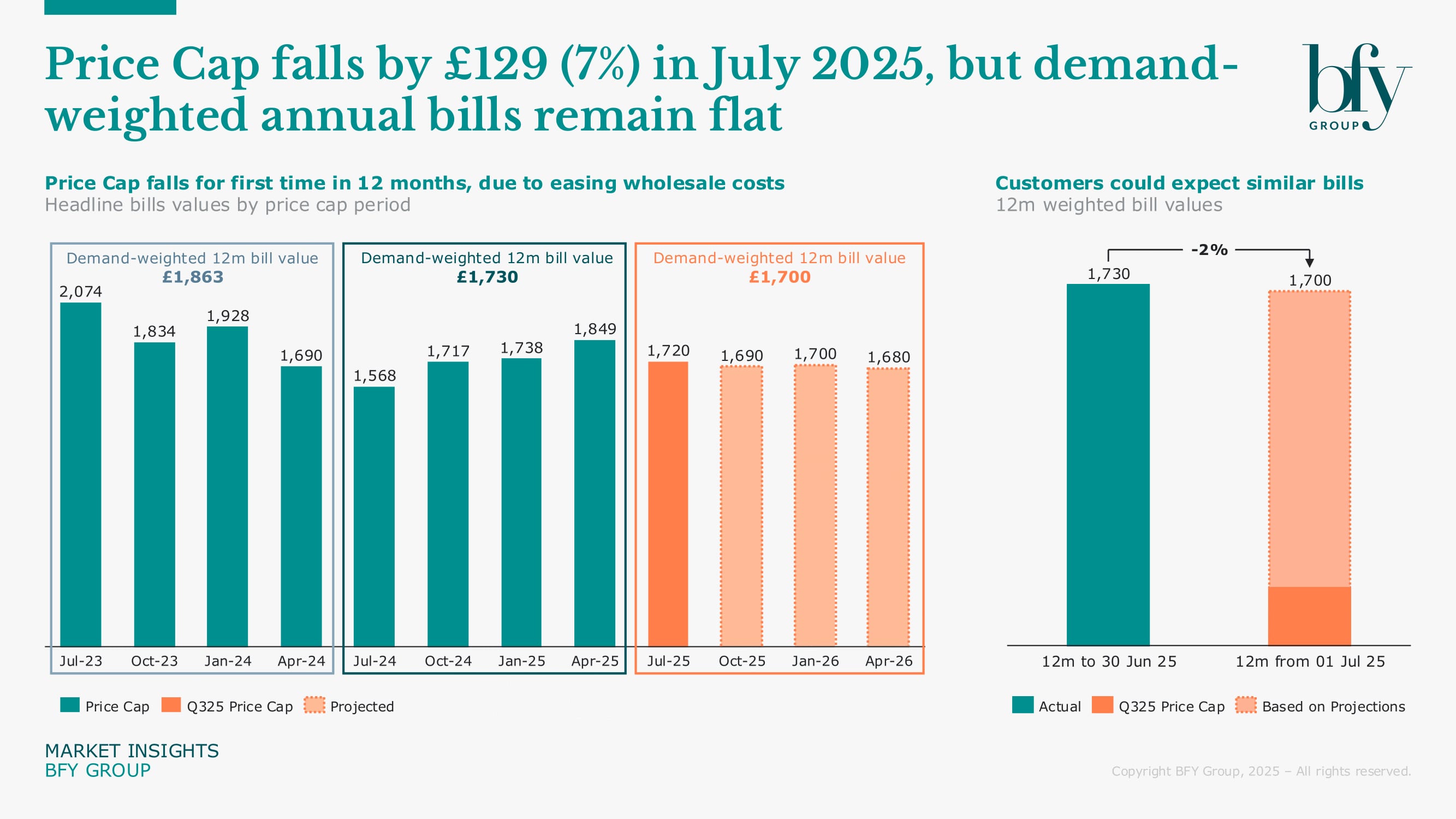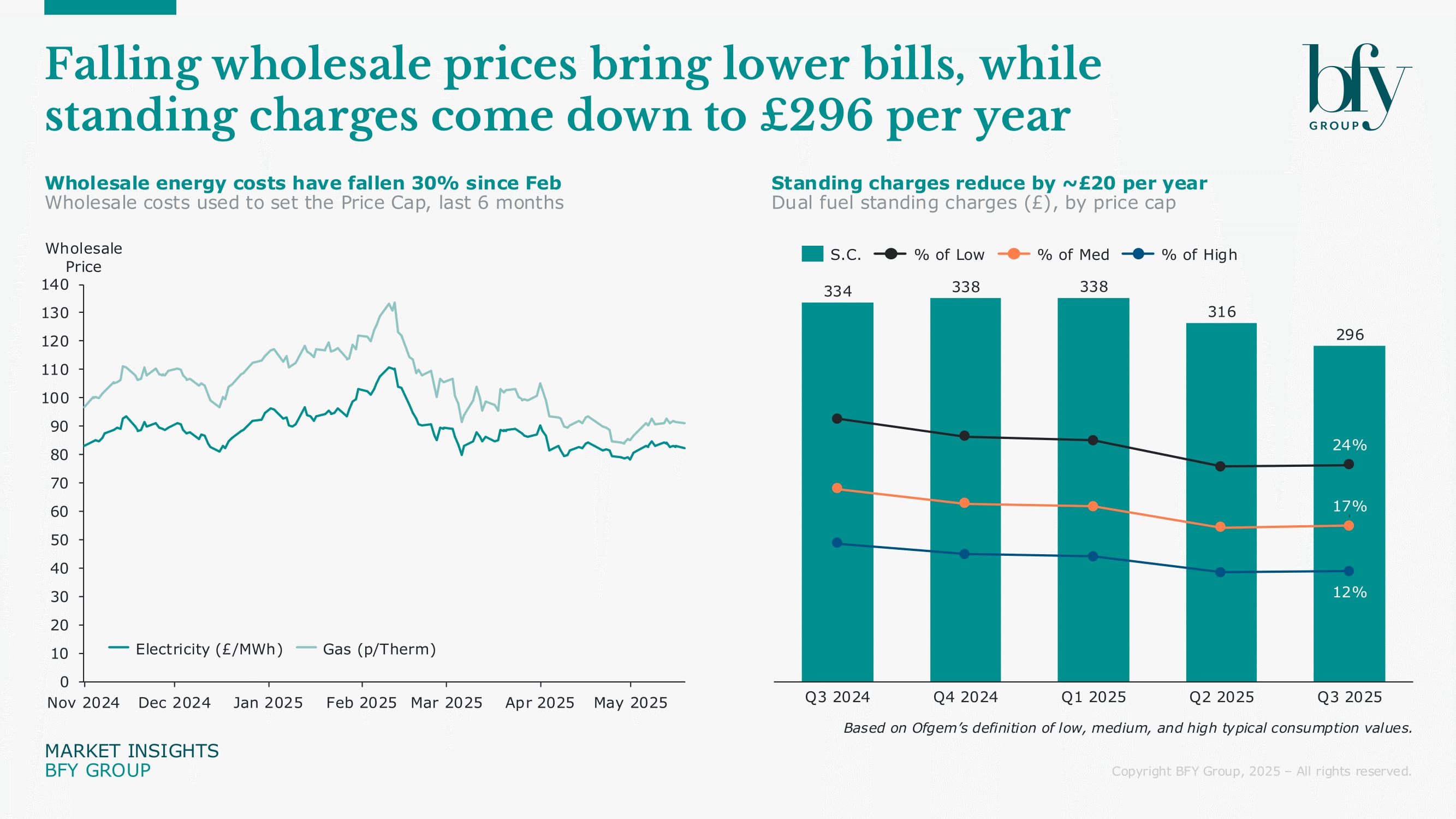Ofgem have announced the first reduction in the Price Cap in a year, falling by £129 (7%) in July to £1,720.
Key insights from Ofgem’s announcement:
- July 2025 cap will drop by 7% from April’s figure to £1,720, returning to a similar level seen in October 2024
- This is mainly due to wholesale prices decreasing by ~30% during the observation window, but also includes a ~£15 reduction to the operating costs allowance
- Current wholesale prices suggest the Price Cap could stay around this level into winter, meaning typical households could expect to pay around £1,700 for their energy over the 12 months from July 1st
- Accounting for seasonal consumption patterns, this is only £30 less than what they would have spent over the last 12 months, and bills remain 50% higher than pre-crisis

Official inflation figures published last week reflect the ~9.4% increase in the Price Cap from April 2024 to April 2025. However, on an annualised basis, the average household energy bill actually fell by 7.2% during that time - from £1,863 to £1,730 - highlighting the disconnect between headline cap changes and actual consumer spending.
Wholesale gas and electricity prices have cooled since February
July’s drop in the headline Price Cap is mainly driven by wholesale prices, which have fallen by ~30% since their February 2025 peak. With the risk of volatility never far away, how prices trend over the next few months will be critical as we head into winter, as customers hope to avoid the typical seasonal pattern of rising prices as temperatures fall.
Ofgem have confirmed that standing charges will reduce to £296 per year, though the regulator is continuing their consultation on encouraging suppliers to bring more zero-standing charge tariffs to the market.

Recent surge in switching as suppliers undercut the Price Cap
Suppliers have been offering discounts of up to £300 below the April Price Cap, which saw a surge of customers switching suppliers and taking out fixed tariffs. Since March, we’ve seen an average of 300k customers switching each month – approaching the levels last seen in 2021.

How far can suppliers continue undercutting the Price Cap?
With the July Price Cap falling, and wholesale prices currently flat - we expect the gap between fixed tariffs and the Price Cap to narrow. But with customers showing an appetite for cheaper fixed deals, it remains to be seen how much further suppliers will be willing to undercut the cap.
But it’s not only about fixed tariffs – with an increasing number of innovative tariffs entering the market, we recently explored what suppliers should do to provide clarity in an increasingly complex landscape.
Ofgem update their allowances for core operating costs
Following the conclusion of their review of operating costs, Ofgem have restructured the operating cost allowances in the Price Cap, reducing the amount that suppliers can recover from customers by ~£15 per year.
As part of these changes, Ofgem have acknowledged the growing costs faced by suppliers due to debt. We’ll share more on the impact of these changes soon – join our mailing list to receive our latest updates directly to your inbox.
For more on the impact of July’s Price Cap, or the restructuring of operating cost allowances, contact Matt Turner-Tait.
Matt Turner-Tait
Senior Manager
Matt lead clients through key strategic projects exploring growth opportunities, business models, competitive advantage, and mergers & acquisitions.
View Profile

